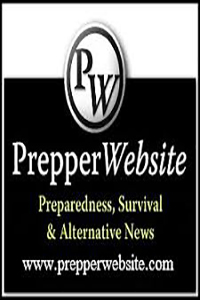Home › Forums › What’s Cookin? › Tips on Cookfire Starting and Maintenance…..
- This topic has 7 replies, 2 voices, and was last updated 10 years, 7 months ago by
Capt. Mac..
-
AuthorPosts
-
May 15, 2014 at 8:35 PM #8090
J
GuestAm going to throw in a few general tips on cooking fire maintenance and such. I know a lot of you will know most of these, and please feel free to add on to this as you wish. I have found, though, that what some of us might consider common sense to the point of being obvious, others might not think about. These are things I have learned through trial and error, and would save others the error part of the learning curve.
So, here goes…
– The larger the fire, the more wood you have to haul.
-great around the home tinder and fire starting stuff, dryer lint, rubbing alchohol, lamp oil, hand sanitizer, candle stubs. Also, wipe excess grease out of cooking pans with paper or scrap cloth and use this for starting the next fire. DO NOT USE GASOLINE as it tends to go up in a fireball.
-Do not use lumber scraps for cooking fires as they are often treated with chemicals that can make you sick if the chemicals travel into your food.
-Open flame will do more harm than good, unless you are cooking hot dogs or marshmallows. A good bed of coals is ideal for cooking.
-Dutch ovens are pretty much the best all around cooking pot, in my opinion. Unless you are bugging out, I recommend one.
-Start your fire small, many people make the mistake of goin too large too fast. Refer to the first point also.
-Once your fire is going, place any damp wood around the edges of the fire. This will speed drying it out and also serve as a heat reflector. If it starts to char or smolder, simply roll it into the fire to continue it burning.
-I recommend digging a small pit, wherever possible. If the ground is wet and you are concerned about water seeping in, put some wood in the bottom of the pit and start your fire on top of this platform. If you use rocks, they can overheat and explode sometimes, sending shrapnel and fire embers everywhere, usually where Murphy’s (Sod’s) Law will help them do the most damage.
– A small metal blowtube around 18″ or 24″ long and about 1/4″ inner diameter in length will go a long way in keeping your fire going. Use it to blow on the embers in the same manner that a bellows works. No more fanning the fire 🙂
-Cook before nightfall. A fire can be seen a long way off. It will also destroy any night vision you might need.
– If you are cooking something in a can, make sure to open the top first before putting it in the fire. Otherwise, you will eventually have a hand grenade (and quite possibly need to change your shorts!)
May 15, 2014 at 11:01 PM #8096PJ
KeymasterJ
Awesome tips! Any experience with cooking when all that you have is wet wood?
May 16, 2014 at 12:28 AM #8097J
Guestunfortunately yes lol.
basically try to keep some tinder as dry as possible. bugging in, I have a woodbox in the garage for fire starting stuff. also, fire starter logs work well, they are basically wax and sawdust. match light charcoal is another good option; it will generally burn long enough to dry stuff out.
if you’re in the boonies…..eh. look for dead falls, you should find something dry in the bottom of them, inner bark from logs is your best bet. this might sound bad bit look for animal dens, raid them for dry leaves or grass used as bedding. I usually try to hedge my bets by bringing some tinder and putting it in a ziplock bag. I cheat wherever possible!
there are also some neat fire starter packets put on the market. I have used some of them and they work decently.
May 16, 2014 at 10:37 PM #8106PJ
KeymasterI like the idea of looking for deadfalls and keeping firestarter kits on my person. I keep thinking of worst case scenarios where it’s raining and everything is absolutely soaked. That would indeed be a true suckfest.
May 16, 2014 at 11:08 PM #8109Echo5Charlie
GuestYou brought up a lot of great points. I just wanted to go a little farther on NOT burning treated lumber. There has been different methods used in treating lumber but for many years it was treated with arsenic. That will kill you if you breath the fumes. Wife’s old boss was hospitalized after having breathed in treated lumber someone threw on his bon fire when he went in for a minute. Not good when times are good, would be worse in SHTF.
Most treated lumber now produced, in the last 9 or so years, is treated with copper. Probably not the best thing to inhale either.
For those who don’t know treated lumber is pine that’s been treated with a preserving agent. You can USUALLY tell it by its greenish color. The new stuff comes in all colors, blues, green, red, yellow and cedar tone. The worst to burn is the old dark green stuff, that’s been treated with arsenic. If it’s old, like an old deck, there’s no telling by color. Be careful what you scrounge up for fire wood.
May 16, 2014 at 11:36 PM #8110J
Guestgood info Echo5, I tend to err on the side of caution, as old lumber can discolor and be hard to distinguish with the untrained eye once it is weathered a bit.
May 17, 2014 at 3:33 AM #8111Echo5Charlie
GuestThat’s exactly the problem. If you can’t tell the difference in lumber, stick to real trees lol.
September 20, 2014 at 10:19 AM #10510Capt. Mac.
GuestMake your own fire starters.
Take some tin foil and make a little cup. About an inch across and an inch deep. Coil corrugated cardboard into it with the corrugates pointing up. Fill the whole thing with melted paraffin wax. I guess you could even use crayons. They might make pretty colored flames?
This will NOT light with flint sparks or rubbing two sticks together. Anyone too stupid to be without a lighter or matches…….. er……a……well…. Darwin may have been correct. But once you get it going, it will run an hour and damn near melt glass.
They are water proof, small, lite and easier than digging around for dry tinder.
Capt. Mac.
Pandemonium Airlines
“When we need to descend you’ll all be ask to lean forward” -
AuthorPosts
- The forum ‘What’s Cookin?’ is closed to new topics and replies.






